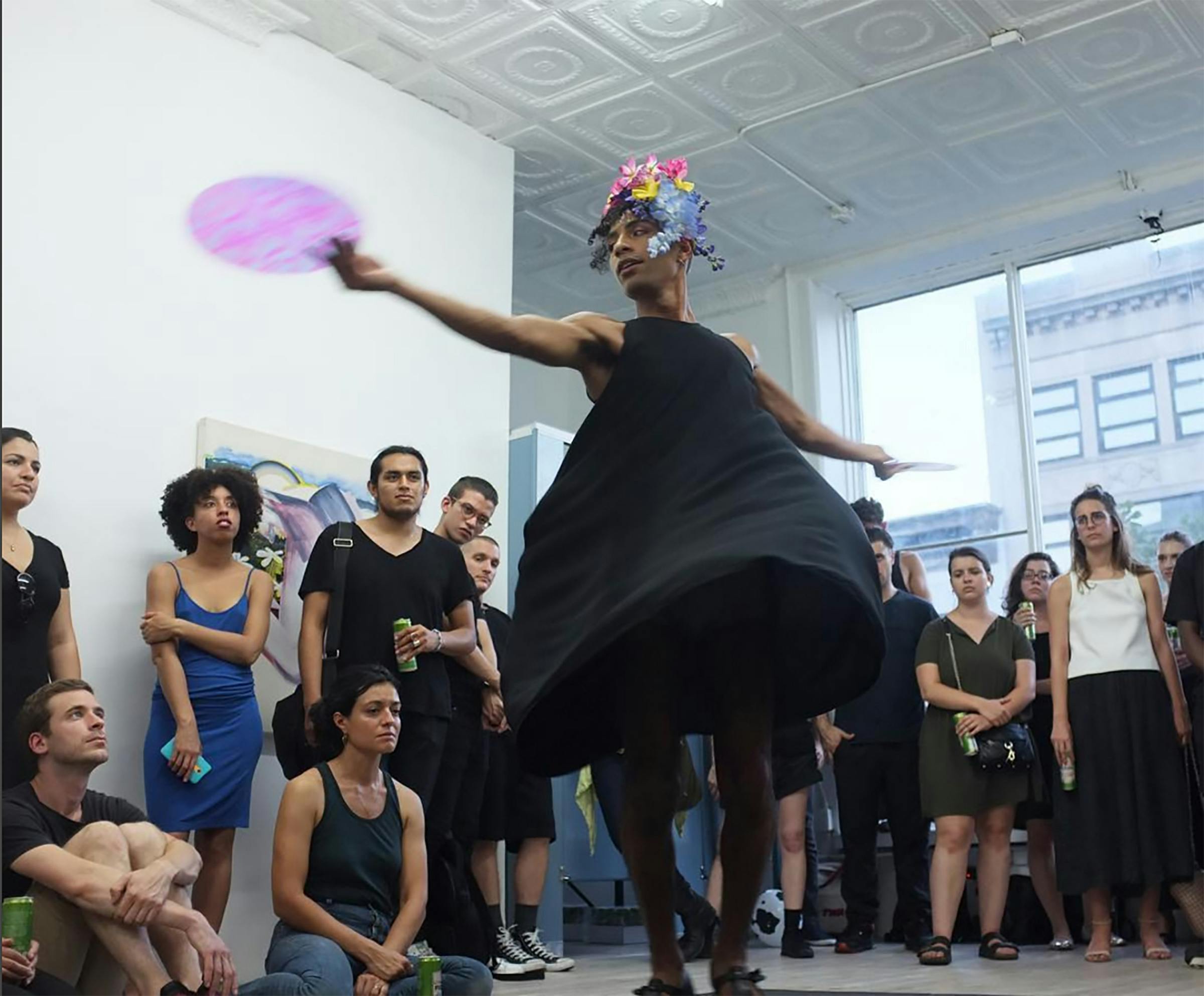Studio Visit: ray ferreira


ray ferreira, for example, is an interdisciplinary artist from Corona, Queens, who received their MFA in studio art from Hunter College in 2016. On any given Target Free Sunday, ferreira leads groups of curious visitors through the galleries or teaches art-making workshops inspired by the processes and materials of an exhibiting artist. An educator at Studio Museum for more than a year, ferreira first engaged their artistic expression in high school with an interest in costume and fashion design. Their affinity for bending the rules continued as they explored art making as an undergraduate student at the State University of New York at Geneseo.
A self-described magpie, ferreira often incorporates personal, decorative and other iridescent materials into their artwork and defines their practice as a combination of text-based images, site-specific installation and performance. Their most recent projects are informed by their proclivity for collapsing time and space, a concept that traces the histories of colonialism of marginalized communities and treats language as material and materials as language. Currently ferreira is concentrating on their performance practice in which they use their body to complicate and confront the audience’s normative ideologies by confounding movement and language. Their performance work reorganizes and attempts to break down progressive ideas about access and agency. They cite contemporary artists Juliana Huxtable, Diamond Stingily and Rashaad Newsome as inspirational references for what ferreira regards as distinct gestures of Black queer femme intersectionality—the creation of transformative artworks that recognize their place within imperialistic power structures while simultaneously liberating themselves from these positions.
Frequently switching between their roles as practicing artist and Museum educator, ferreira explains that the differences are often not so clear. Their method for each is framed by a drive to facilitate relationships with art objects that can carry relevance outside the Museum’s walls, and that resonate directly with contemporary issues. As a visual artist they are constantly seeking to reassess and challenge their practice, and admit that they enjoy working with teenagers most, as they find teens are more inclined to challenge their own biases and privileges—a facet of the teaching experience that informs a more expansive art practice.
In the coming months ferreira is preparing to participate in several collaborative performances and other projects, and remains curious about how the Museum will continue its work in the community through inHarlem. They are hopeful that the initiative will continue to break down barriers by offering inclusive and accessible art programming.
-- Alexis Gonzalez

